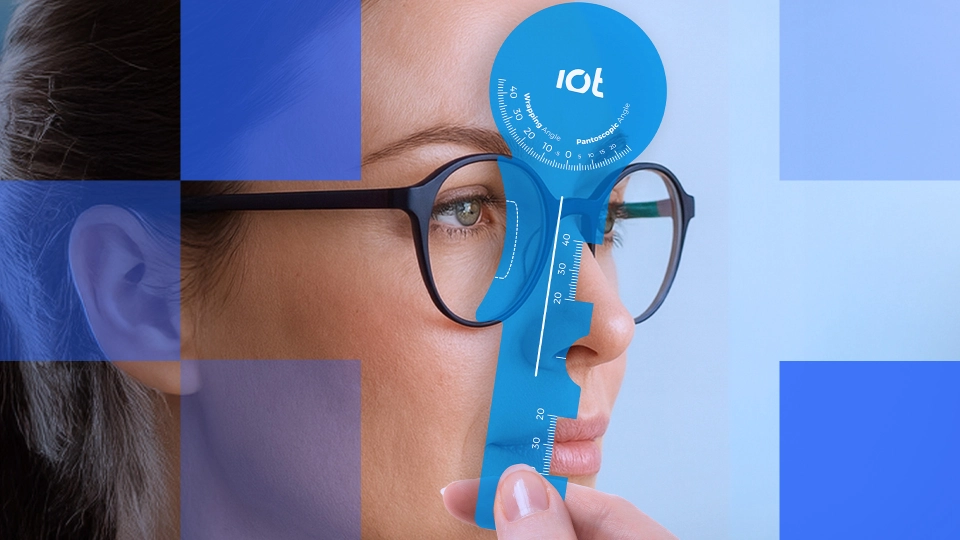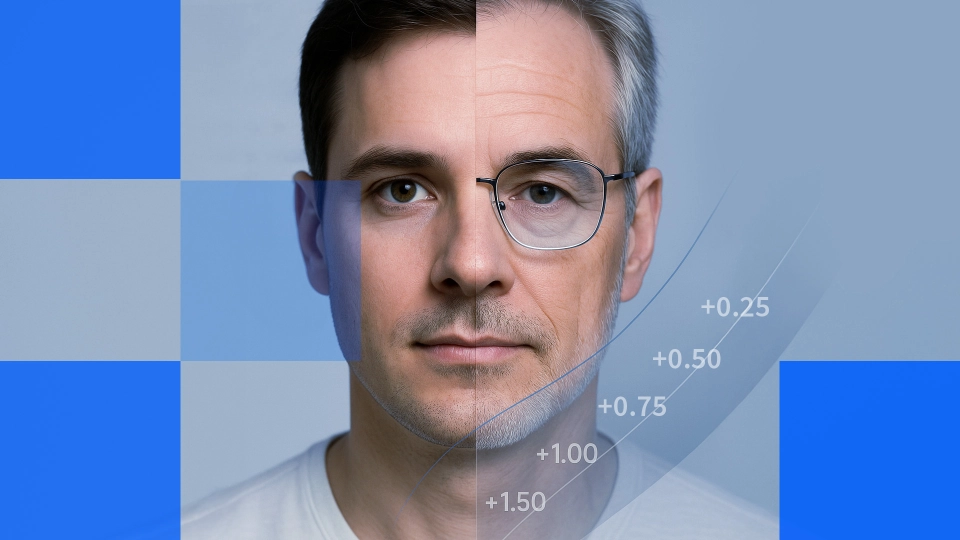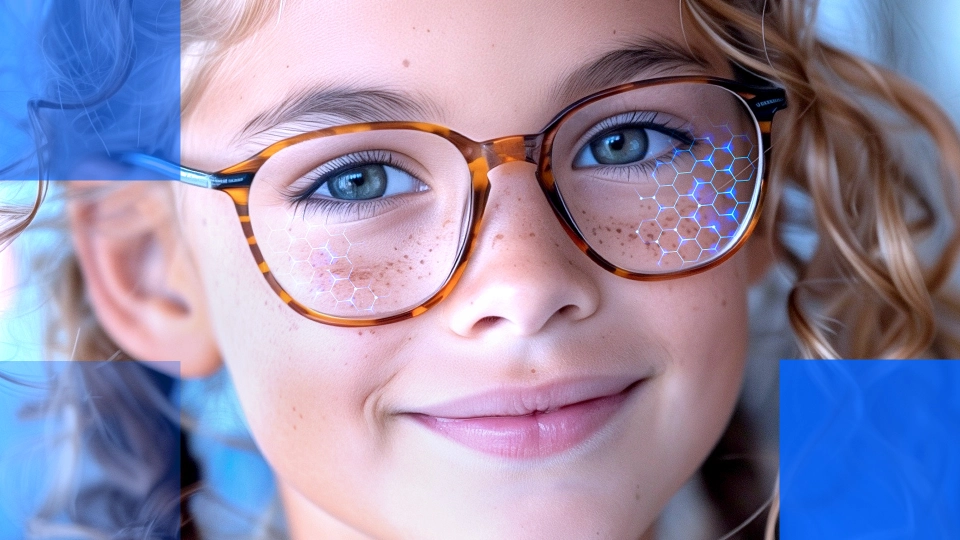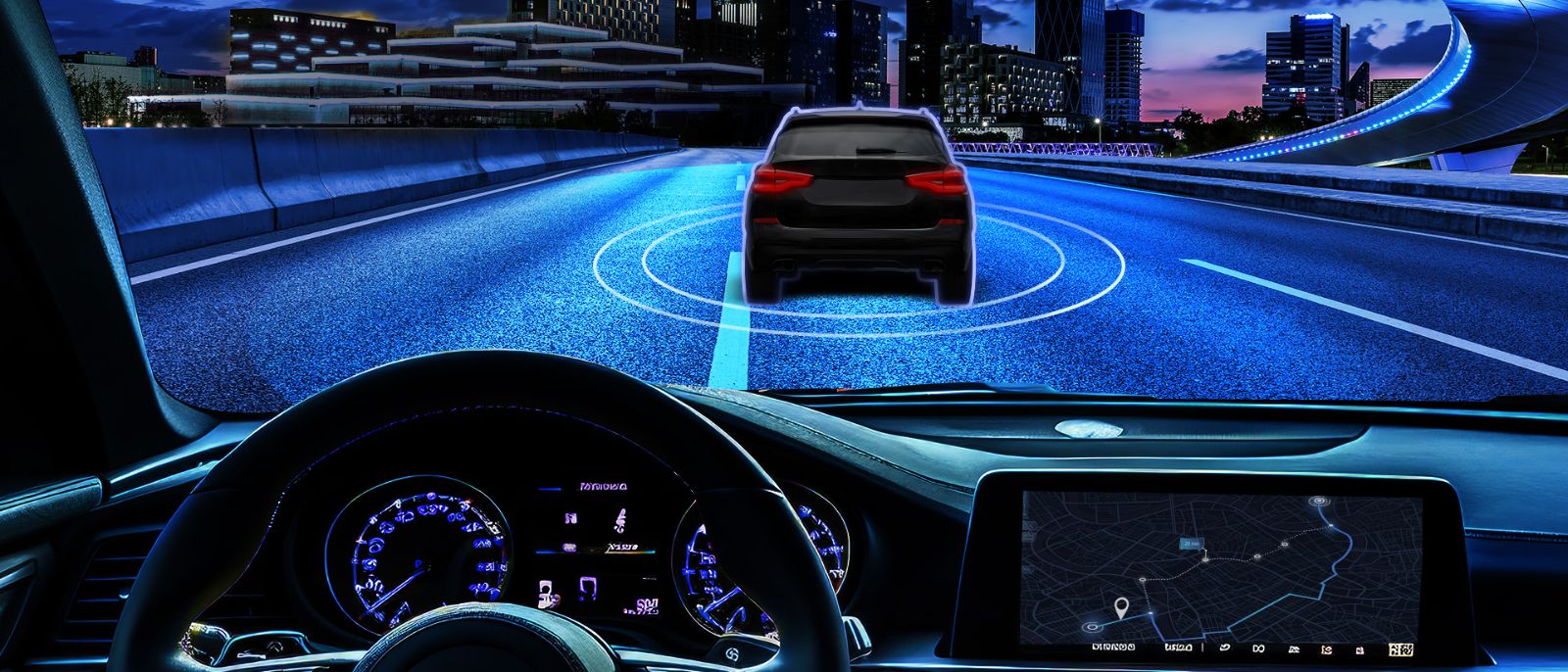
How to Treat Night Myopia with Driving Lenses
A comprehensive guide to night myopia, from identification to treatment
- What is night myopia?
- Night myopia vs. night blindness
- What causes night myopia
- Night myopia symptoms and risks
- Discussing night myopia with patients
- Treating night myopia
- Driving lenses to treat night myopia
- Our recommendation
- Explaining Endless Drive to patients
- Clinical trial data
- Illuminate the way for your patients

How to Treat Night Myopia with Driving Lenses
A comprehensive guide to night myopia, from identification to treatment
Have your patients ever complained in your office about uncomfortable night driving events? Do they experience visual problems in low light settings that are not corrected by their normal spectacle lenses or contact lenses? Have you talked to them about night myopia?
Recent studies from the National Eye Institute highlight the increasing prevalence of myopia, with about 42% of Americans affected. This figure is even more pronounced in urban areas across Asia, where up to 90% of high school graduates are reported to be myopic. Although not all cases of myopia will result in night vision difficulties, the overlap between general myopia trends and night vision challenges underscores the importance of addressing this issue.
In this article, we provide detailed insights into the causes, symptoms, and treatments for night myopia. We also highlight the challenges it presents for drivers in low-light conditions and introduce the Endless Drive lens by IOT as a specialized solution designed to improve visual clarity and safety for night driving.
What is night myopia?
Night myopia, also known as "nocturnal myopia," is a condition where individuals experience difficulty seeing in low light or at night. Night myopia occurs in dim lighting as the pupil dilates to allow more light to enter the eye, increasing the eye's refractive error and leading to myopic (nearsighted) vision. This means that objects at a distance can appear blurry or less clear at night compared to during the day.
Although night myopia is a phenomenon that we have known about for centuries, it was not until 1951 that the phenomenon of ‘night myopia’ was fully investigated resulting in a study published in the Journal of the Optical Society of America by Koomen, Skolnik, and Tousey (of the Naval Research Laboratory).
They surmised that to enhance the driver’s vision and safety, more minus power would be required, compared to what they wear during the daytime.
Night myopia affects both emmetropes and ametropes, with an average of 13-20% of loss of visual acuity. It causes drivers to feel like they have less control, making the driving experience more uncomfortable and more dangerous. This is why finding an effective treatment is important.
Night myopia vs. night blindness
Night myopia differs from nighttime glare problems and also from night blindness, or nyctalopia. Night blindness may be caused by ocular pathology or even a vitamin A deficiency. An example of this is glaucoma, and/or the medicines used to treat glaucoma which restricts the pupil even more. Another example is early-onset age-related macular degeneration (or AMD), where one of the first warning signs is trouble seeing at night.
What causes night myopia
Night myopia manifests when lighting conditions are low, and the pupil dilates, causing a slight myopic shift. Also, during dilation when more of the cornea is exposed, spherical aberration becomes more evident. The natural response within our visual system is to accommodate when exposed to spherical aberration. To offset this slight accommodation and, therefore, treat night myopia, additional minus power is needed compared to what one would need during the daytime.
But what exactly are the symptoms of night myopia and what should we look for in patients in order to provide the right treatment for them?
Night myopia symptoms and risks
Symptoms and risks of night myopia include asthenopia (tired, uncomfortable eyes), seeing glare or halos around streetlights, and general discomfort when trying to focus while in low light environments. The driver will squint frequently to improve their visual acuity. Squinting creates a ‘pinhole’ which lessens the effects of spherical aberration, but also limits the amount of visual information entering the eye. With all this combined, it becomes increasingly more difficult to see well while driving at night.

Discussing night myopia with patients
When communicating a new lens technology to patients, the best strategy is to keep it simple. Asking the patient pointed questions is always helpful. Here are some good starting questions when discussing night driving with your patients:
- ‘Tell me, how do you feel when driving at night?’
- ‘Do you find the halo and glare around streetlights troublesome while driving at night?’
- ‘Do you notice that you do not see as well at night as you do during the day?’
- ‘Do you find yourself squinting more while driving at night?’
These types of open-ended questions will invite a conversation between you and your patient regarding night driving and night myopia. If you also suffer from night myopia, consider sharing your personal experience with your patient. This shows empathy towards their visual challenge of night driving, and your patient will feel both heard and understood. There is no better way to build rapport than finding commonalities.
Treating night myopia
For ametropes, spectacle lenses or contact lenses are necessary all day long. However, these lenses normally only take into account standard light conditions when calculating the power their user needs. To add to our knowledge and understanding of vision and night myopia, we should consider advanced optical solutions that help both ametropes and emmetropes: driving lenses.
Driving lenses to treat night myopia
The best solution for people with night myopia is to wear glasses with specialized night driving lenses. This entails a Single Vision or PAL lens option with a slight amount of added minus (or reduced plus power) at the top of the lens. The IOT research team discovered that compensating by -0.25 D is just the right amount to make driving safer and more comfortable.
Discover Endless Drive Single Vision lenses
Endless Drive Single Vision lenses cater to drivers without presbyopia, ensuring exceptional visual clarity for driving, whether it's day or night.
Our recommendation
Our recommendation for driving lenses to help with night myopia is our Endless Drive design. The differentiating aspect of the Endless PAL and SV is the Night Vision Zone which compensates the ramifications of night myopia. In addition to the extra minus power (-0.25D) above the fitting cross, the Endless Drive lens maximizes the intermediate and distance zones, which are the areas used most frequently when driving. This optimizes the quality range of vision when considering the road, the dashboard, and mirrors.
But, how do we prove these lenses are the best solution for our patients? How can we get the message across in a simple way?
Explaining Endless Drive to patients
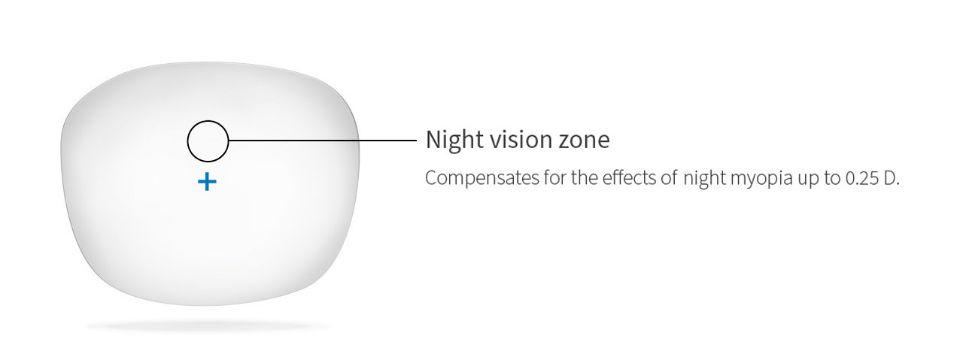
When discussing Endless Drive Single Vision lenses with patients, it's key to focus on how these lenses directly address night driving challenges:
- Night Vision Zone: These lenses feature a specialized zone designed to improve visual acuity and reduce fatigue at night, making driving safer and more comfortable.
- Advanced Technology: Incorporating IOT Digital Ray-Path® 2, Endless Drive lenses minimize aberrations for clearer, sharper vision across the entire lens surface.
- Made for Drivers: The lenses are optimized for driving, with a power distribution that compensates for night myopia, ensuring focused vision for distant objects and the dashboard.
- Versatile and Compatible: Endless Drive lenses can be customized to fit any frame and are compatible with various materials and coatings, offering a tailored solution for every driver.
These points highlight the lenses' unique benefits and the technological innovation behind them, making them an ideal choice for those seeking enhanced night driving comfort and safety. By explaining these lenses in a concise way, it shows your patients that you are the optical expert. Stress the fact that Endless Drive lenses are backed by solid clinical trials.
Clinical trial data
It is not enough that we recommend the Endless Drive lenses to our patients. We must show the science to prove the designs effectiveness.
The results uncovered by IOT’s clinical trials and studies team in the double-blind wearer trials exceeded expectations:
When asked for their first impression of the Endless Drive lenses, with a scale of 1-5 (5 being fantastic!), 100% of the wearers rated the Endless Drive lens a 4 or 5! Even after 7 days of daylight driving, 97% gave the Endless Drive lens a rating of 4 or 5. Additionally, 97% of the clinical trial subjects adapted to this lens design in 3 days or less, and 87% in 1 day or less! Within one week of the trials, 100% of the participants adapted to the Endless Drive lenses. There were no non-adapts to this design.
Discover Endless Drive Progressive Lenses
97% of individuals who used Endless Drive Progressive lenses reported a considerable increase in comfort while driving, both during day and night.
Illuminate the way for your patients
Intrigued by the promise of clearer, more comfortable night driving? Experience the difference firsthand! Test out the Endless Drive PAL or SV lenses and consider including them in your product portfolio. We're confident that you'll be so impressed by their performance that you'll be eager to recommend patients. Imagine the satisfaction of providing a solution that addresses night myopia and enhances nighttime driving comfort.
Reach out to IOT today, and let's take the first step towards revolutionizing your product offering and making night driving a safer, more enjoyable experience for everyone.
Get started now: Unlock the potential of Endless Drive lenses for your patients. Complete the form below!

